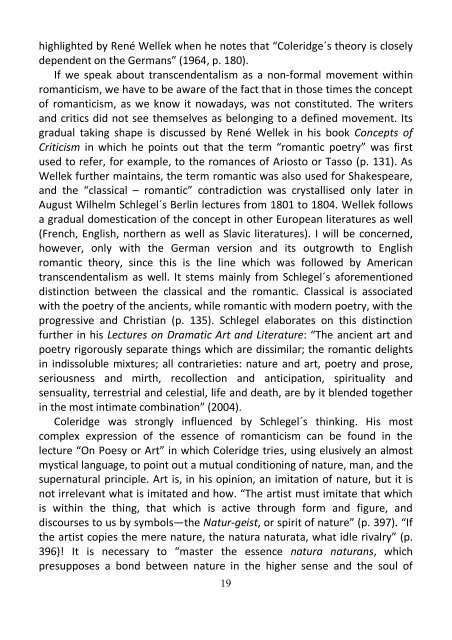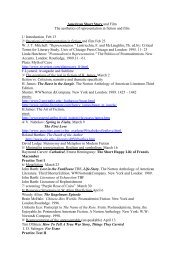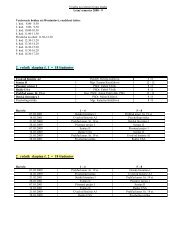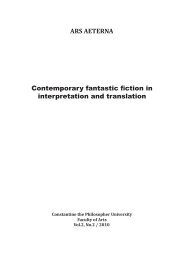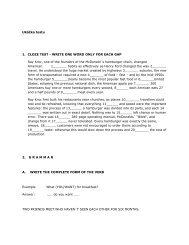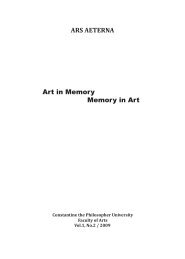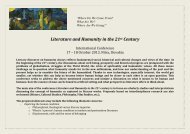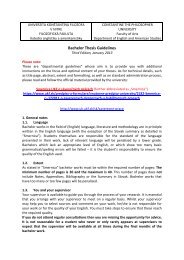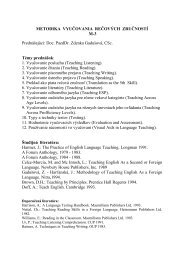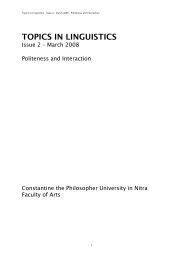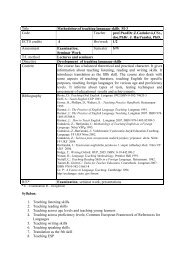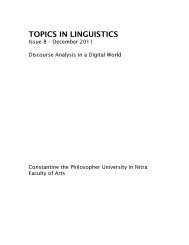Literature and Culture
Literature and Culture
Literature and Culture
You also want an ePaper? Increase the reach of your titles
YUMPU automatically turns print PDFs into web optimized ePapers that Google loves.
highlighted by René Wellek when he notes that “Coleridge´s theory is closely<br />
dependent on the Germans” (1964, p. 180).<br />
If we speak about transcendentalism as a non-formal movement within<br />
romanticism, we have to be aware of the fact that in those times the concept<br />
of romanticism, as we know it nowadays, was not constituted. The writers<br />
<strong>and</strong> critics did not see themselves as belonging to a defined movement. Its<br />
gradual taking shape is discussed by René Wellek in his book Concepts of<br />
Criticism in which he points out that the term “romantic poetry” was first<br />
used to refer, for example, to the romances of Ariosto or Tasso (p. 131). As<br />
Wellek further maintains, the term romantic was also used for Shakespeare,<br />
<strong>and</strong> the “classical – romantic” contradiction was crystallised only later in<br />
August Wilhelm Schlegel´s Berlin lectures from 1801 to 1804. Wellek follows<br />
a gradual domestication of the concept in other European literatures as well<br />
(French, English, northern as well as Slavic literatures). I will be concerned,<br />
however, only with the German version <strong>and</strong> its outgrowth to English<br />
romantic theory, since this is the line which was followed by American<br />
transcendentalism as well. It stems mainly from Schlegel´s aforementioned<br />
distinction between the classical <strong>and</strong> the romantic. Classical is associated<br />
with the poetry of the ancients, while romantic with modern poetry, with the<br />
progressive <strong>and</strong> Christian (p. 135). Schlegel elaborates on this distinction<br />
further in his Lectures on Dramatic Art <strong>and</strong> <strong>Literature</strong>: “The ancient art <strong>and</strong><br />
poetry rigorously separate things which are dissimilar; the romantic delights<br />
in indissoluble mixtures; all contrarieties: nature <strong>and</strong> art, poetry <strong>and</strong> prose,<br />
seriousness <strong>and</strong> mirth, recollection <strong>and</strong> anticipation, spirituality <strong>and</strong><br />
sensuality, terrestrial <strong>and</strong> celestial, life <strong>and</strong> death, are by it blended together<br />
in the most intimate combination” (2004).<br />
Coleridge was strongly influenced by Schlegel´s thinking. His most<br />
complex expression of the essence of romanticism can be found in the<br />
lecture “On Poesy or Art” in which Coleridge tries, using elusively an almost<br />
mystical language, to point out a mutual conditioning of nature, man, <strong>and</strong> the<br />
supernatural principle. Art is, in his opinion, an imitation of nature, but it is<br />
not irrelevant what is imitated <strong>and</strong> how. “The artist must imitate that which<br />
is within the thing, that which is active through form <strong>and</strong> figure, <strong>and</strong><br />
discourses to us by symbols—the Natur-geist, or spirit of nature” (p. 397). “If<br />
the artist copies the mere nature, the natura naturata, what idle rivalry” (p.<br />
396)! It is necessary to “master the essence natura naturans, which<br />
presupposes a bond between nature in the higher sense <strong>and</strong> the soul of<br />
19


